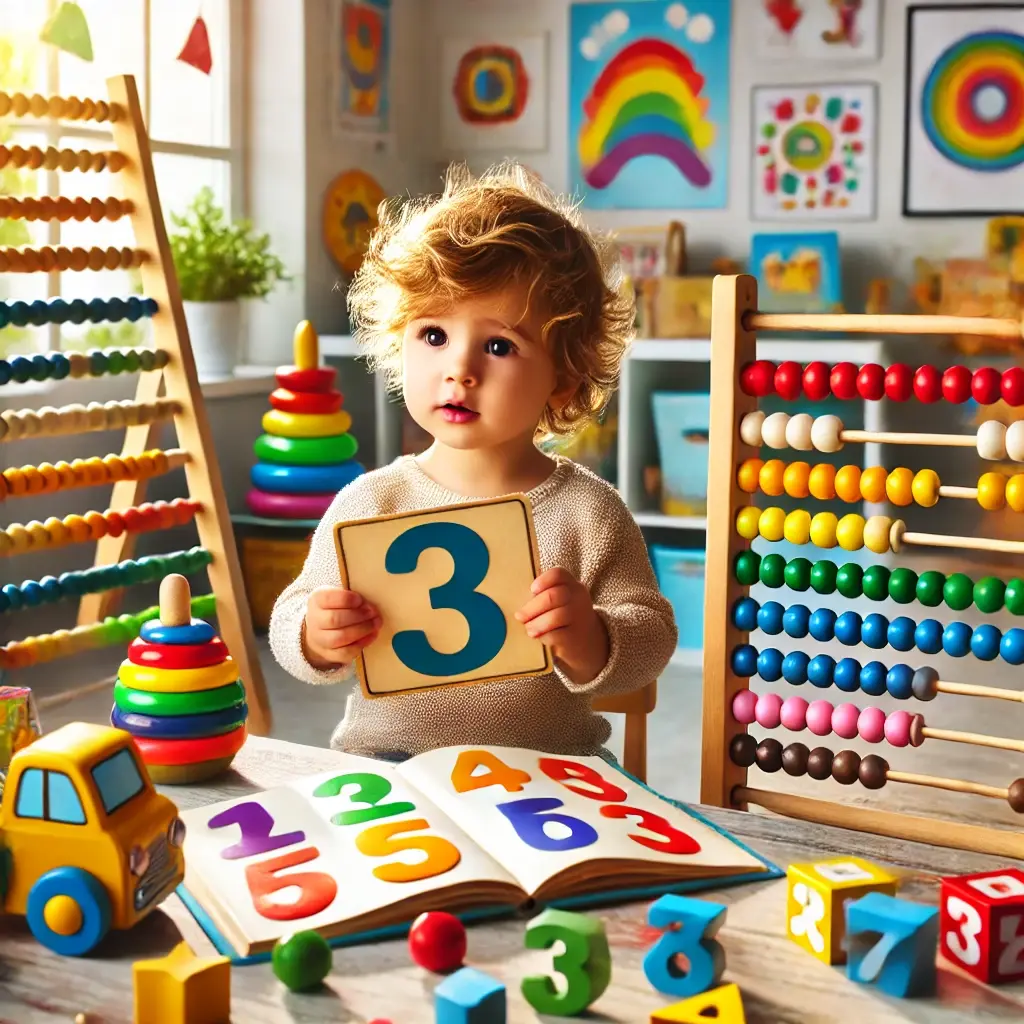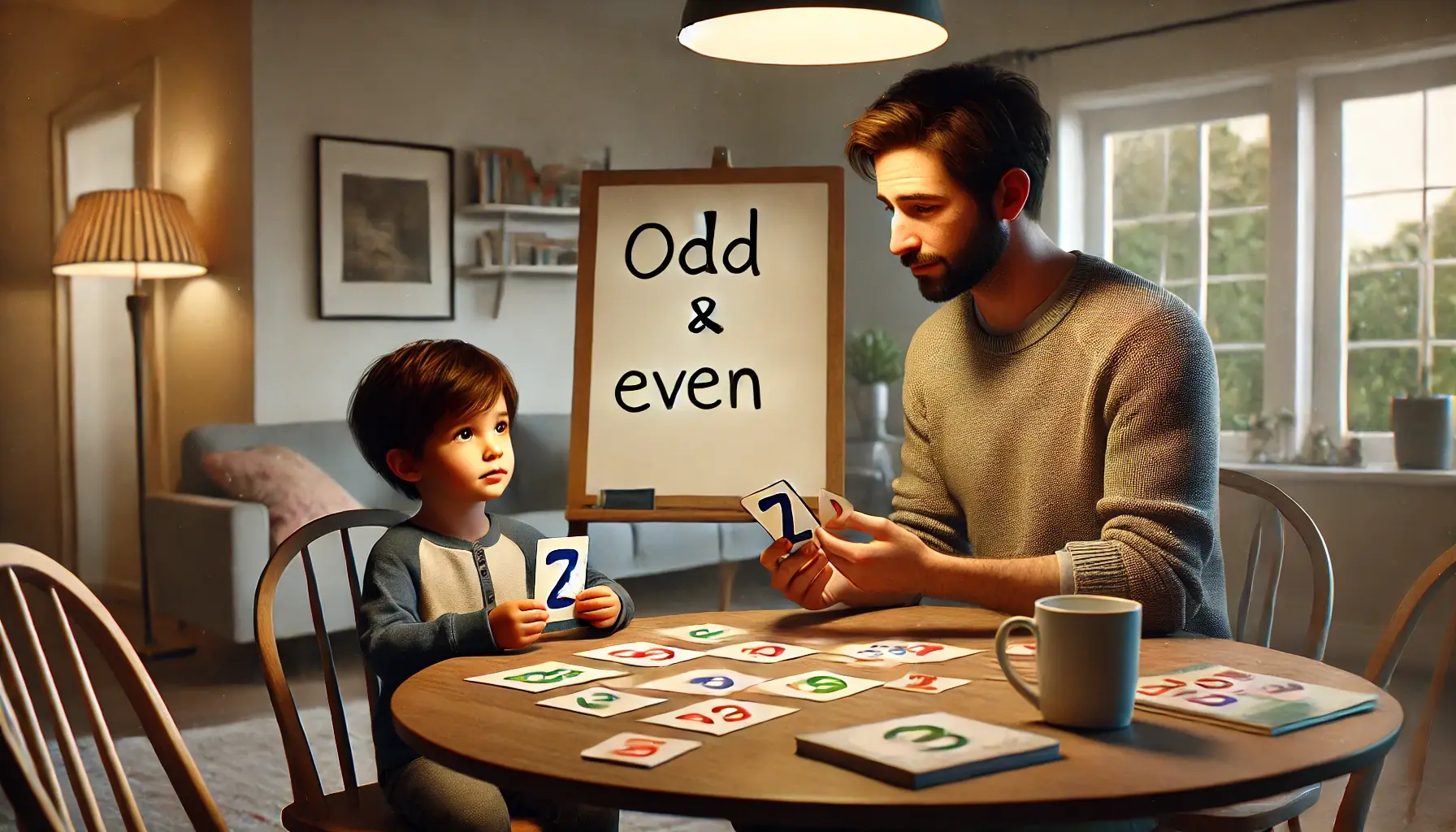
Seventh grade is an exciting year in math because it builds on the foundation laid in earlier grades and opens the door to new, more complex topics. At this stage, students are ready to explore deeper mathematical concepts beyond simple arithmetic and apply their knowledge to more abstract ideas. They’ll extend what they’ve learned in previous years, like fractions, ratios, and basic geometry, and begin working with more advanced subjects like algebra, statistics, and probability.
This is the year students learn how to solve more complicated equations, analyze data sets, and even dive into real-world problems where they can apply their math skills practically. Understanding patterns, analyzing relationships, and making predictions using probability and statistics become key components of their learning. It’s all about taking those fundamental skills and pushing them to a higher level, all while learning new terms, strategies, and problem-solving techniques.
In this article, we’ll give you a quick guide to what 7th graders will learn in math so you can get a head start on what to expect and how to prepare.
10 Essential Skills and Topics Students Will Learn in 7th-Grade Math
1. Properties of Numbers
In 7th grade, one of the big things you’ll learn is the Properties of Numbers. At first, it might sound a little complicated, but it’s pretty cool once you get the hang of it! These properties help you understand and categorize numbers in different ways, and they make solving equations way easier, especially when you start working with negative numbers.
For example, you’ll learn about real numbers, just the numbers we use daily, like fractions, whole numbers, and decimals. Then there are rational numbers—those are numbers that can be written as fractions—and irrational numbers, which can’t be written as a simple fraction (like the number pi). You’ll also get to know integers (which include positive and negative whole numbers), natural numbers (just the counting numbers), and whole numbers (which are the natural numbers plus zero).
2. Negatives
In 7th grade, negative numbers become a big part of math, and you’ll be working with them a lot more than before. At first, it might seem strange, but understanding negative numbers is super important as you dive deeper into math. You’ll learn that negative numbers, which are less than zero, are the opposite of positive numbers. For example, while 3 is a positive number, -3 is a negative number and less than zero.
You’ll get comfortable adding, subtracting, multiplying, and dividing with negative numbers throughout the year. It’s not as tricky as it sounds once you practice. For instance, you’ll discover that adding a negative number is the same as subtracting and subtracting a negative is like adding! Learning these rules will make handling negative numbers in equations so much easier.
3. Algebraic Equations and Expressions
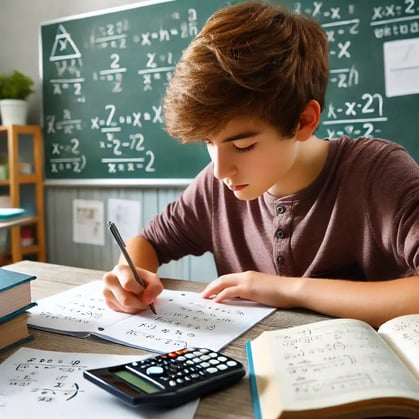
In 7th grade, algebra starts to play, and you’ll spend much time working with algebraic equations and expressions. This is when you begin solving problems that have variables—those are the letters like x or y that represent unknown numbers. At first, it might seem tricky, but with practice, you’ll learn how to solve these equations step by step, and it’ll start to make sense.
You’ll start with one-step equations, where you just need to do one thing to find the variable's value. Then, you’ll move on to two-step equations, adding an extra step before solving for x. From there, you’ll get to tackle multi-step equations, where there are several things to work through before figuring out the answer. It’s like following a recipe—if you follow the steps correctly, you’ll get the solution!
But it doesn’t stop there. You’ll also learn how to solve inequalities, similar to equations, but instead of finding an exact number, you’ll find a range of possible answers.
4. Fractions, Decimals, and Percentages
In 7th grade, you’ll dive deeper into fractions, decimals, and percentages and learn how to switch between them like a pro. Understanding how to convert between these different forms is super important because you’ll see them used in all math problems, from simple calculations to more complex real-world scenarios. For example, you’ll learn how to turn a fraction into a decimal, then into a percentage, and back again. It’s all about making sure you can easily move between these different forms, depending on what the problem is asking for.
Not only will you practice conversions, but you’ll also get into topics like ratios and how they relate to fractions and percentages. Plus, you’ll work on real-life math situations, like calculating percent rates of change, figuring out how much an item costs after a discount, and even learning how to add tax to a purchase.
On top of that, you’ll start working with units of measurement, learning how to convert things like ounces into kilograms or feet into meters.
5. Ratios
In 7th grade, you’ll get to explore the concept of ratios, which are a way to compare two quantities. Don’t worry—it’s simpler than it sounds! A ratio shows how much of one thing there is compared to another. For example, if you have 3 apples and 2 oranges, the ratio of apples to oranges is 3:2. In math class, you’ll learn how to write ratios, whether in fraction form, with a colon (like 3:2), or in words. This helps you understand relationships between numbers, which is a key skill as math gets more advanced.
As you practice working with ratios, you’ll dive into a concept called slope, or the rate of change. This is where ratios meet geometry. The slope tells you how steep a line is by comparing how much it rises (or falls) over a certain distance. In 7th grade, you’ll learn how to calculate the slope of a line by looking at two points and figuring out how much the line changes between them.
6. Geometry
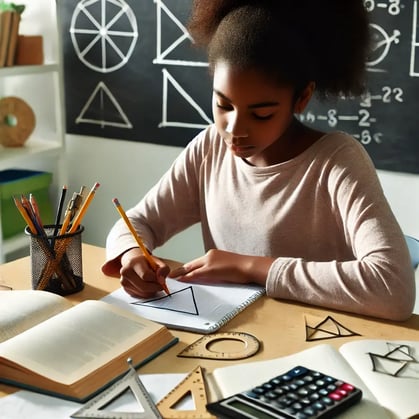
In 7th grade, geometry takes a big step forward, and you’ll get to explore all kinds of shapes and figures. You’ll learn about congruent and similar figures, which means understanding when shapes are the same size and shape or just the same shape but different sizes. You’ll also learn about scaling, which is how you compare one figure to another—whether you're making a drawing larger or smaller, you’ll know how to keep the proportions right.
One of the main focuses in 7th-grade geometry is on triangles and angles. You’ll start using tools like a protractor to measure angles and learn how to calculate angle measurements within different types of triangles. It’s a hands-on way to understand how angles work and why they matter in geometry.
You’ll also build on what you already know about finding the area of shapes, but this time, you’ll learn the formulas for all kinds of shapes, like rectangles, parallelograms, triangles, trapezoids, and even circles. You’ll take it up a notch by learning how to find the volume of 3D objects like spheres, cones, and cylinders. You’ll even get introduced to surface area and lateral area, which help you measure the outside of these 3D shapes.
7. Constructed Responses
In 7th grade, you’ll start working with constructed responses, answering more in-depth, multi-part math questions. This is where all the formulas you’ve learned—like how to calculate area, volume, surface area, and lateral area—come into play. Instead of just solving simple problems, you’ll apply these formulas to more complex situations, often involving several steps or parts.
The goal of constructed responses is to help you practice using what you’ve learned in a more detailed way. You’ll have to think critically and explain how you arrive at your answers, not just plug numbers into a formula. This section of your math book is designed to prepare you for more advanced math, where problems often require you to solve for multiple things and show your work clearly.
As you work through these kinds of problems, you’ll become more confident in tackling tough, multi-step questions, and by the end of the year, you'll be able to break down and solve even the most challenging math problems with ease!
8. Statistics
In 7th grade, statistics gets more exciting as you build on what you already know and dive into new concepts. You’ll get to review key ideas like mean, median, range, and mode—the building blocks of understanding data. But this year, you’ll also take things a step further by learning to calculate mean absolute deviation, which helps measure how spread out a set of data is.
One of the coolest things you’ll explore is the box and whisker plot. At first glance, it might look like a strange diagram, but once you understand what each part represents, it becomes a really useful tool for analyzing data. You’ll learn how to create your own box and whisker plots, which show how data is distributed, and you’ll get to understand what each point—the minimum, maximum, quartiles, and median—means.
9. Probability
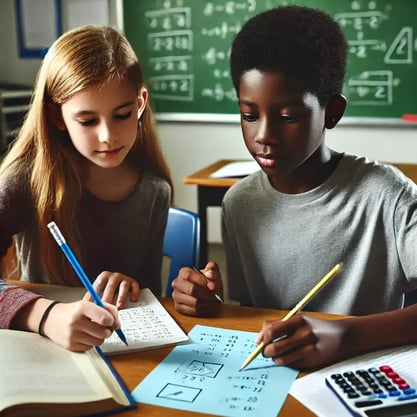
In 7th grade, you’ll dive deeper into probability, which is all about predicting how likely something will happen. After reviewing the basics that you’ve already learned, like the chance of flipping a coin and getting heads or tails, you’ll get to explore more complex ideas. One key concept you’ll learn is what a random sample is and how it plays a role in determining probability. This will help you understand that the bigger and more random the sample, the more accurate the probability prediction becomes.
You’ll also get to solve word problems with more complicated probability questions, which will help you grasp these ideas even better. Another important topic you’ll study is the difference between a simple event (like rolling a die and getting a 4) and a compound event (like rolling two dice and getting specific numbers on both). Understanding the difference between these events is key in calculating probability.
10. Magic Squares and Vertex Edge Graphs
The last two exciting topics in 7th-grade math are Magic Squares and Vertex Edge Graphs, designed to challenge your brain and bring together everything you’ve learned so far.
Magic Squares are fun puzzles where you arrange numbers in a grid so that every row—vertical, horizontal, or diagonal—adds up to the same total. The twist is that you can only use the numbers 1-9 once, which takes careful thinking and planning! This lesson is a great way to practice your number skills and get your brain working creatively.
On the other hand, Vertex Edge Graphs help you understand relationships between points and distances. These graphs are made up of vertices (which are points) and edges (the lines connecting those points). You’ll learn how to use these graphs to answer questions about the distance from one point to another, helping you visualize and solve problems that involve connections and pathways.
Boost Your 7th Grader’s Math Skills with Genie Academy
If your 7th grader needs extra help with their math, tutoring centers like Genie Academy can make all the difference. Located in New Jersey, Genie Academy offers both online and in-person math tutoring, giving families flexible options to fit their schedules. And it’s not just math—Genie Academy covers all core subjects like abacus, reading, writing, and even coding for students of all ages.
What makes their 7th-grade math tutoring stand out is their advanced curriculum. It doesn’t just cover what’s being taught in school—it goes beyond helping students master current topics and prepare for future challenges. The tutors at Genie Academy are highly experienced and certified, so your child will learn from experts who know how to explain tough concepts in a way that makes sense.
Plus, with small class sizes, your child can focus better and get the personalized attention they need to excel. Genie Academy is a great place to start if you’re looking to boost your child’s math skills and build their confidence!
We have locations in East Brunswick, Hillsborough, Marlboro, South Brunswick, Plainsboro, and South Plainfield, New Jersey.
Discover more about us, our countless success stories, our core values, our philosophy, and our rich history. You can also explore our reviews and testimonials and learn about the true benefits of Genie Academy.
Math Skills Checklist for the End of 7th Grade
By the end of 7th grade, students should have developed a solid foundation in key math concepts that prepare them for the challenges of higher-level math. Below is a checklist of the essential skills your child should be proficient in before moving on to 8th grade:
- Understanding Algebraic Equations: Students should be able to solve one-step, two-step, and multi-step algebraic equations involving variables. This includes solving inequalities and applying these skills to real-life situations.
- Mastering Fractions, Decimals, and Percentages: Converting between fractions, decimals, and percentages and calculating with these forms is a crucial skill. Students should also be able to handle ratios and use them to solve problems.
- Geometry Fundamentals: By now, students should be comfortable calculating the area and volume of various shapes (like rectangles, triangles, and circles) and 3D objects (like spheres and cylinders). They should also understand how to measure angles and scale figures and work with congruent and similar shapes.
- Working with Negative Numbers: A solid grasp of negative numbers is essential. Students should be able to confidently add, subtract, multiply, and divide negative numbers, understanding how they fit into both equations and real-world contexts.
- Applying Statistical Concepts: Students should be proficient in finding the mean, median, mode, and range and calculating the mean absolute deviation of data sets. They should also be able to interpret and create box-and-whisker plots.
- Understanding Probability: Students should understand both simple and compound events in probability and be able to calculate the likelihood of different outcomes. They should also be familiar with how random sampling affects probability.
- Working with Ratios and Proportions: This includes understanding and solving problems related to ratios, rates, and proportions, as well as applying these concepts to real-world scenarios.
- Graphing with Vertex Edge Graphs: By the end of the year, students should know how to read and interpret vertex edge graphs, using them to calculate distances and answer related questions.
- Magic Squares Problem-Solving: Students should have practiced working with magic squares, sharpening their problem-solving abilities by ensuring that each row, column, and diagonal adds up to the same number.
Conclusion
As you can see, 7th-grade math is full of exciting and important concepts that build a strong foundation for future learning. From mastering algebraic equations and understanding geometry to dive into statistics and probability, this year is all about expanding math skills and applying them to real-world situations. By the end of 7th grade, students will be well-prepared to tackle more complex topics in 8th grade and beyond. With practice, patience, and a little extra help when needed, your child will thrive in their math journey!




